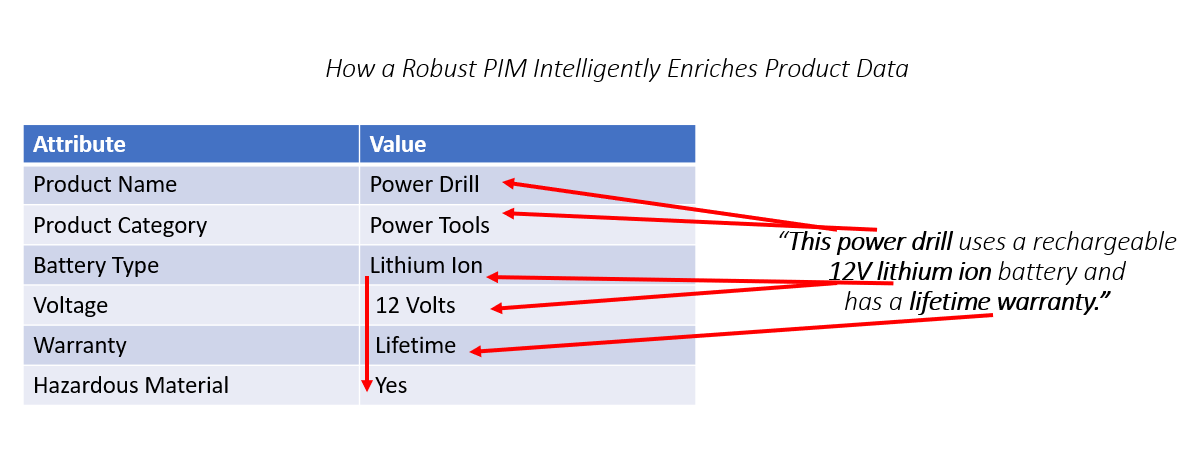eCommerce: Increasing Agility and Efficiency with Product Information Management
The COVID-19 crisis continues to accelerate the existing global shift towards eCommerce. In April 2020, the general retail sector experienced a 209% growth compared to the same period last year, according to an analysis by ACI Worldwide.

Companies in most industries that previously had considered digital only as a complementary channel to their brick and mortar locations are now realizing that digital has now become their primary channel, and that they now must quickly adapt their commerce strategies. A failure to offer preferred products in main online marketplaces risks losing previously loyal customers to the competition.
Retailers (as well as distributors or brands selling B2B or B2C) can only ensure market resilience if they are both agile and efficient in selling products online.
There are two key strategies that retailers can implement during this tumultuous time:
- Increase agility in adjusting product assortment
- Improve efficiency when creating high-quality, rich product information
Let’s be very realistic and look at how product information management is still handled in many companies.
Strategy 1: Increasing Agility in Adjusting Product Assortment
Let’s assume that I, as a panicked retailer, have decided that I need to quickly adjust my online product offering. Our merchandisers have scoured the globe for brand-compliant products that are likely to sell. We’ve even created a “Self-Isolation” product category on our website. Shouldn’t I be able to offer my shiny new products immediately? This is 2020! What’s the hold up? With the multitude of fulfillment models available, I don’t even need to have the product to sell it! What I really need is the product information. Sounds easy, no? I’ll just have the supplier email me the information in a pristine, expertly curated, exquisitely articulated, meticulously formatted, easy-to-use Excel file and it’ll be online by noon.
Narrator: The new items were not online by noon.
Instead, what the supplier sent to me was a Windows ‘95 Excel sheet rife with typos, missing information, multilingual data and yes, even profanity. Oh, and it only included half of their products (many of which I didn’t want in the first place). It contained no images, user manuals, or keywords, but—because I’m lucky—it did include at least one abbreviated item name with no vowels. In other words, the file didn’t include anything that would entice an online shopper to buy.
Now, the onus lies squarely on me, the retailer, to give this product data a makeover. For most, this involves trading emails, editing multiple Excel files, making endless phone calls, everything up to and including manually keying in data from a coffee-stained price book. What’s more, there is no record of who changed, what, where, and when. These are the untold intricacies of New Product Introduction (NPI) that must be managed if online retailers are to remain agile, especially during the COVID-19 outbreak, or any other major consumer disruption. And this is the type of problem that only gets worse each time a new vendor’s items are onboarded: More products, more problems. As daunting as it may be, accepting this data “as is” is key to this strategy, and a Product Information Management (PIM) system can help.
A PIM allows you receive data in any file type or format, errors and all. This is particularly helpful for smaller vendor files that, while often providing high-margin niche goods (often termed “long-tail” items), also provide data in the most unique (i.e., least digestible) formats. PIM becomes your catcher’s mitt to automatically accept this new item data regardless of format, completeness, etcetera.
Great, so we’ve successfully received a bunch of bad data. Now what? Enter strategy 2: Perfecting this data.
Strategy 2: Improve Efficiency When Creating High-quality, Rich Product Information
First, let’s determine how bad our bad data actually is. How do we define a perfect product listing online? On our mobile channel? On a social media advertisement? This is a topic on its own, but let’s assume that as a company, we’ve created a standard for our product information that guarantees the best possible customer experience with the highest chance of conversion. For example, let’s say we’ve developed a standard which requires that all items must have:
- A name for each item
- A detailed description
- A minimum of 5 high-resolution images
- 5 category-specific attributes (both to maintain consistency across similar items and to simplify product comparisons)
PIM now measures item completeness against this (your) criteria, creating a veritable report card for these items. This tells everyone on the team (yes, even your suppliers) exactly where these items fall short of your golden standard. Depending on the information that is missing, a structured workflow is triggered (like a dispatcher), which sends the incomplete items to each team member, along with a summary of what needs to be fixed and how to go about it. The result is a repeatable, trackable process, a system that brings new items to market four times faster, all under one roof. People and products stay updated. Any items that don’t meet this standard are never published.
Now, you may be thinking, “But we’re a small team responsible for a lot of new items. Even with a PIM tool, the volume still seems insurmountable!” This is a valid concern, but an effective PIM tool will help you address high volume data enrichment in two ways: automation and delegation. Incoming data files, even bad ones, often contain many hidden clues that would allow missing data to be populated automatically.
For example, let’s look at the following item description:
“This power drill uses a rechargeable 12V lithium ion battery and has a lifetime warranty.”
As illustrated below, a robust PIM leverages intelligent business rules that act like “Sherlock Holmes” for your data, making reasonable inferences based on the data provided. In this case, the rules engine could surmise that this item is a power drill from “This power drill”, and therefore auto-classify it to the appropriate category of “Power Tools.” Further, it could parse out the attribute called “Battery Type” and populate it with “Lithium Ion” and so on. For extra credit, the PIM may have already standardized colors, units of measurement, brand names, capitalization, etc. (Perfectionists, rejoice!) Note that the final attribute was derived from another value. (i.e., the rules engine created the “Hazardous Material” attribute and populated it with “Yes” simply by recognizing the keyword “lithium ion”).
The more rules that users create reduces the amount of manual effort required. Exceptions are flagged for manual review. As for delegation, PIM facilitates task assignment directly back to suppliers and other third parties via limited user interfaces where all changes are subject to internal revision.
This is the fastest way to get new SKUS online.

With just a few business rules in place, PIM users move from high-volume data maintenance to exception management.
However, the value of a PIM is not limited to the speed of new item introduction alone.
Retailers can also use a PIM to repackage and market existing items to create a more resonant offering.
- A skin care brand might consider creating a “Self-Care Isolation Kit” which contains products high in Vitamin D, along with all the trimmings for a luxurious bubble bath. Perhaps it’s configurable so customers can choose the individual components. This renaming, regrouping, reconfiguration and all associated media assets can be managed in PIM.
- Create substitutions for high-demand items which can be offered before the users reach an “Out of Stock” page.
- Cross-sell a scented candle.
- Up-sell an organic or hypoallergenic alternative.
- Create a BOGO promotion that includes a free sample.
Now is the time for struggling retailers to consider how they can parlay their brand strength into new high-demand product categories while retaining credibility with current and referral customers. These choices should be driven by strategy, not technology. With PIM, online retailers report 10x faster new item introduction while maximizing conversion and average cart size.
Businesses must also be laser-focused on closing the gap between in-store experiences and those online. COVID-19 has drastically limited consumers’ ability to see, touch, hear, smell, taste products and, subsequently, buy them. In other words, we’ve lost our most primal method of gathering the very information that fuels our purchasing decisions. Furthermore, returns due to poor product data now pose even higher costs, greater inconvenience and, almost absurdly, significant health risks.
PIM is therefore a strong step towards resilience in these unprecedented times. Perhaps unthinkably, we are now more dependent than ever on information technology to make our purchasing decisions. With PIM, retailers have the opportunity to build new relationships with online shoppers leveraging data that:
- Informs: Provides all necessary descriptions, attributes, media, manuals, keywords, categories, FAQs, reviews, etc.
- Suggests: Relates cross-sells, up-sells, substitutions (especially during periods of low-inventory), variations, and more
- Differentiates: Creates a unique experience for customers that frames your brand as a trusted source of information
- Resonates: Offers heightened value because of the consumers’ social, emotional, economic or environmental context
The good news is that exploring and executing a PIM strategy can be done even while self-isolating—you can get started with these resources:
Learn more about Product 360 here.
Watch this deep-dive webinar (available on-demand).
Want to learn more about digital commerce platforms and supplier relationship management? Then register for our Digital Commerce and Supply Chain Summit.








